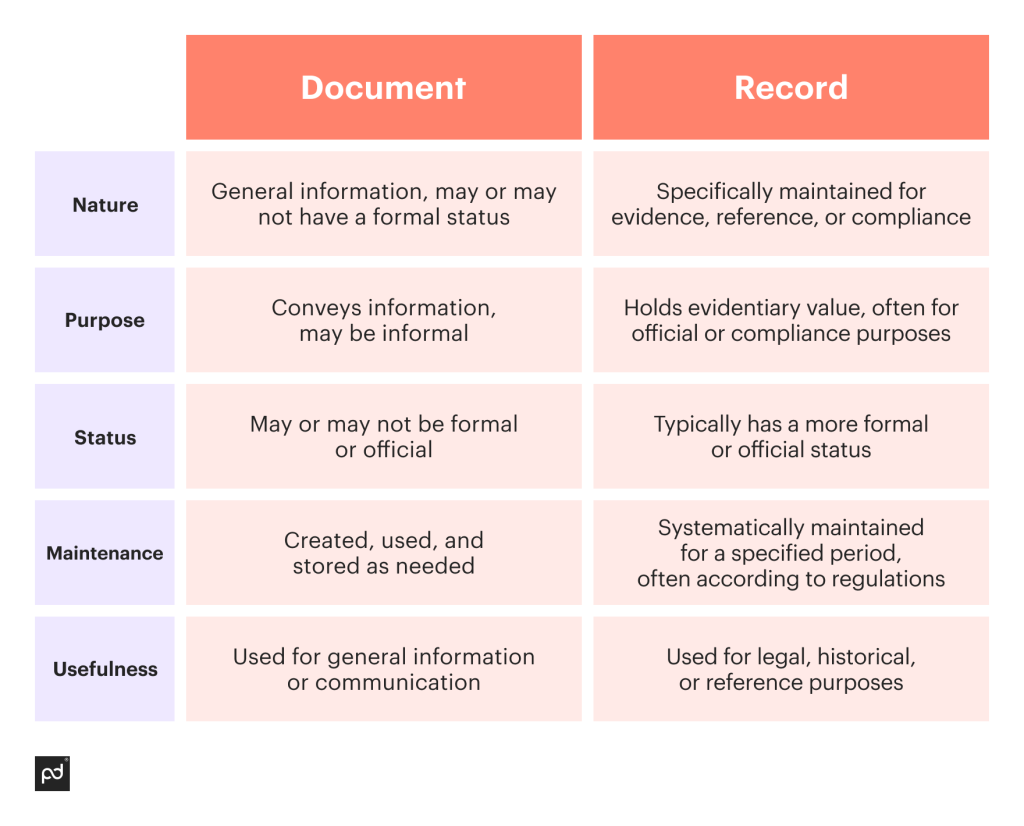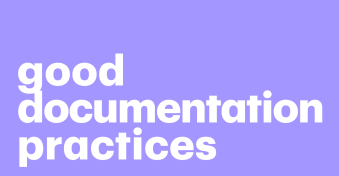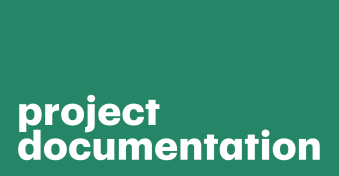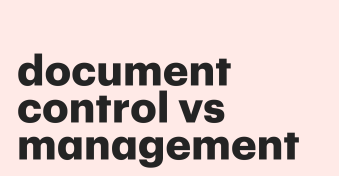Document vs record – it can be confusing.
There are so many terms we use in our daily work lives that it is understandable.
Records vs documents are two terms that are often – wrongly – used interchangeably.
We look at the differences so that you’ll never be perplexed again.
Key Takeaways
- A document is a written, printed, or electronic communication that provides some sort of information.
- A record is something that evidences an event, from something as simple as a team meeting to recorded conversations used in a criminal trial.
- Documents can be altered, whether by a simple edit, additions made to the whole document, or even deletion.
- Once accepted as a record, that document cannot be altered in any way.
- A document may be used for a short timespan (think a to-do list), while a record is forever and may be referred to many years later.
What are documents
A ‘document’ is an all-encompassing term that refers to any piece of written communication that provides some level of information.
It can be formal or informal, written, electronic, or printed, and can come in either a structured format or unstructured.
A document can be anything from a memo to a job offer. It can come in email format or can be written traditionally.
One thing to note is that in most cases, you can review and revise that document if you want to add to it, edit it, or delete something.
Documents can act as anything from a simple reminder (your shopping list) to a guide to something (an onboarding manual).
What are records
To avoid confusion, we’ll start with more confusion. Records are usually a type of document but a very special type.
As its name suggests, a record is a particular document that records something. Put simply, a record constitutes evidence of some kind.
However, there are times when a record is not a document, such as when a tape-recorded conversation is used as evidence of that discussion.
Here’s an example of a record. Let’s say your team had a meeting about document management.
Minutes of the meeting were taken and then signed off on. That document is a record of what was discussed at the meeting.
The key word when defining a record is that it constitutes evidence of something that happened.
The other thing to note is that once accepted as a record, it cannot be altered in any way.
How can we understand the difference between a document and a record
There are several things you can use to tell the difference between a record and a document, but perhaps the key one to focus on is the ability to alter.
A document may be accessed by several different people who can edit it, add to it, or delete entire sections.
This is why many businesses use document tracking software: they can see who has altered things and when it happened.
Theoretically, a document could have an infinite lifespan where changes are made.
A great example of this would be an onboarding guide which might see changes made on a regular basis as to what constitutes good practice for new hires at your organization.
However, sticking with that example of an onboarding guide, if there was a meeting held to agree on the format that guide will take, then the discussions in that meeting are recorded for posterity and can be used as evidence that a certain point was agreed on or a particular manager stated something.

Ask yourself questions
So, if you’re looking at a document and asking yourself whether it’s a record vs document, ask another couple of questions; can the document in its current form be altered in any way?
And could the document be used as evidence of something? If the answers were no and yes, you are looking at a record.
From an organizational perspective, documents may have things added to them by multiple people.
This is why businesses often use GDocP (good documentation practices), which consists of rules and guidelines for how that document can be altered and, just as significantly, who can do any of those alterations.
As well as semantic differences, the difference between records and documents is set out by ISO 15489-1:2016, which governs the creation, capture, and management of records.
These ‘rules’ can cover everything from who has responsibilities regarding a record to the processes used at every step of record management.
Contract vs agreement
While the difference between the two may appear simple on the surface, it is still something that creates a lot of confusion in many areas.
One of those areas is within the contract vs agreement debate. How do records and documents fit into that argument?
An agreement is, in essence, a document in most scenarios. It can be changed, and it is not legally enforceable.
Another company may agree to buy a certain number of products from your business, but until that agreement becomes a contract, you do not have an actual record.
Once signed, the contract is a record of what you have discussed and agreed.
It is legally binding, and if, for example, one party reneges on the agreement, the other may seek financial compensation as they have evidence of what was agreed.
So, a contract is a record, while an agreement is nothing more than a document (you can also have verbal agreements that constitute neither).
Using PandaDoc for document vs record management
In all likelihood, your organization generates a tremendous amount of ‘paperwork’.
Nowadays, much of that paperwork comes in digital format; it may be emails, it could be the various PandaDoc templates that you use for different things, or it may be minutes of managerial or team meetings.
Whatever the sources for your paperwork, one thing is clear; you need a robust process for managing and overseeing it.
When someone needs to access a document or record, you need to know where it is stored, so you need a high level of organization and management.
While a good DMS (document management system) may also manage your records, that is not always the case.
Choosing a DMS to manage your records can be an important decision for any business.
You often need immediate access to existing records or documents to see what has been discussed or agreed upon previously.
PandaDoc provides a simple searchable solution
PandaDoc offers you the best of both worlds with its document management software.
It provides a simple searchable solution so that even when a document or record has been named wrongly or stored in the wrong place, you can easily find it.
With everything stored centrally, you will make your teams’ jobs far easier.
The software also allows you to automate repetitive and tedious tasks, freeing up your human staff to focus on more complex work.
You can customize workflows according to your organizational needs and will find that the system saves you hours daily.
The PandaDoc DMS also reduces the likelihood of human error, making your business more productive and efficient.
You can also set up workflows, such as for invoice approval processes, that further reduce the workload for your staff.
It also lets you set up reminder emails and other notifications related to record/document management.
Work on documents and records from anywhere in the world
The modern workplace can see many of your team working remotely.
One of the significant advantages of the PandaDoc system is that its enterprise management tool allows authorized individuals to access and work on documents and records from any location and on any device.
That ease of use from any location also makes collaboration far simpler.
Whether working in real-time or at different times of the day, team members can access documents and add their contributions ad hoc.
If you’re a manager or team leader, you can even get notifications when any alterations have been made to a document.
PandaDoc offers top security features
Of course, many of your documents and records will contain sensitive or confidential information and data.
With cybercrime constantly on the rise, you want to be sure that your management system has good security that protects all your records and documents.
PandaDoc provides a wide range of security features that follow guidelines of regulatory frameworks such as GDPR and HIPAA.
It also allows for ESIGN and UETA-certified eSignatures so that you can generate signed documents that are legally binding.
Disclaimer
PandaDoc is not a law firm, or a substitute for an attorney or law firm. This page is not intended to and does not provide legal advice. Should you have legal questions on the validity of e-signatures or digital signatures and the enforceability thereof, please consult with an attorney or law firm. Use of PandaDoc services are governed by our Terms of Use and Privacy Policy.


